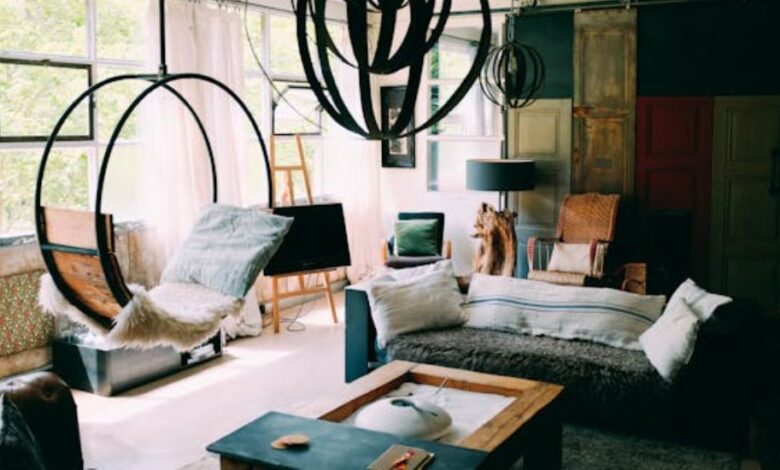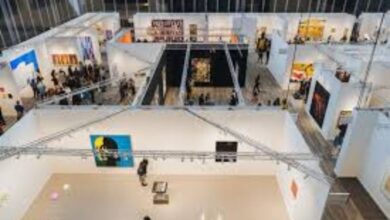Modern Design: Understanding the Essentials of Modern Design and Its Influence

Modern design has revolutionized how we perceive and interact with spaces, objects, and aesthetics. At its core, modern design embraces simplicity, functionality, and elegance. From architecture and interior design to furniture and industrial design, the principles of modernism have shaped a wide array of industries. In this article, we will explore what modern design is, its key characteristics, and how it impacts various aspects of our daily lives. This piece is proudly brought to you by USA Magzines, your go-to source for insightful articles on design and lifestyle.
What is Modern Design?
Modern design is an architectural and interior design philosophy that emerged in the early 20th century, rejecting traditional, overly decorative styles in favor of minimalism and functionality. Influenced by modernism, this design style focuses on simplicity, clean lines, and open spaces, aiming to create environments that are both aesthetically pleasing and practical.
The rise of modern design is closely tied to technological advancements and the industrial revolution. With new materials and manufacturing methods available, designers could experiment with shapes, forms, and structures previously unattainable. This freedom led to the development of sleek, functional designs that emphasized usability and efficiency over ornate detailing.
Key Characteristics of Modern Design
Modern design is defined by several core principles that distinguish it from other design styles. Here are the main features that set modern design apart:
1. Simplicity and Clean Lines
At the heart of modern design is the idea of simplicity. This is often achieved by stripping away unnecessary details and focusing on clean, straight lines. Whether it’s furniture, architecture, or artwork, modern design avoids the intricacies of traditional styles, opting instead for a streamlined and efficient approach.
2. Functionality First
In modern design, form follows function. This means that every element of a space or object is designed with a clear purpose. Whether it’s the layout of a room or the design of a chair, the goal is to make things as practical and functional as possible, without sacrificing aesthetics.
3. Neutral Color Palettes
Neutral colors like white, black, gray, and beige are common in modern design. These colors help create a clean and calm environment, providing a perfect backdrop for other design elements. Occasionally, bold colors are used as accents, but the overall color scheme tends to be subdued and harmonious.
4. Open Spaces
Modern design often embraces open, uncluttered spaces. In architecture, this translates into open floor plans where rooms flow seamlessly into one another. In interior design, the idea is to avoid crowding spaces with too much furniture or décor, creating a sense of airiness and freedom.
5. Natural Materials
While modern design often incorporates industrial materials like metal and glass, it also emphasizes the use of natural elements such as wood, stone, and leather. These materials bring warmth and texture to otherwise minimalist spaces, helping to balance the cool, sleek appearance of modern design.
6. Minimalist Approach
Modern design champions the concept of “less is more.” The focus is on reducing clutter and keeping only essential items that serve a purpose. Decorations and furnishings are kept to a minimum, often chosen for their functionality as much as their aesthetic value.
The Influence of Modern Design in Everyday Life
Modern design principles are not limited to just architecture or interior spaces; they have influenced many aspects of our daily lives. From the devices we use to the way we organize our homes, the impact of modern design can be seen everywhere.
1. Modern Design in Architecture
Architecturally, modern design is reflected in the sleek, glass-clad skyscrapers and open-plan homes that dominate today’s urban landscape. Buildings are designed with simplicity in mind, favoring geometric shapes and large windows that let in natural light. USA Magzines has covered several architectural projects where modern design plays a key role in shaping the way we experience urban living.
2. Furniture and Interior Design
In furniture, modern design manifests in pieces that are simple, functional, and aesthetically appealing. Chairs, tables, and sofas in a modern design style often feature clean lines, neutral colors, and innovative use of materials. Interior spaces designed with modern principles in mind tend to feel open, spacious, and free of clutter. This approach creates a peaceful environment that promotes relaxation and comfort.
3. Product Design and Technology
Many of the gadgets and devices we use today are products of modern design principles. From smartphones to laptops, the sleek, minimalist look of most tech products owes its existence to the influence of modernism. The desire for functionality, ease of use, and aesthetic appeal drives product designers to adopt modern design philosophies.
Why Modern Design Matters
Modern design matters because it offers a practical and aesthetically pleasing way to approach space and product design. Its emphasis on functionality ensures that spaces are not just beautiful but also usable. The minimalist nature of modern design allows us to declutter our lives, creating environments that foster productivity, creativity, and relaxation.
Moreover, modern design promotes sustainability. By focusing on natural materials and efficient use of space, it encourages eco-friendly practices. In a world where sustainability is becoming increasingly important, modern design offers a way to create spaces that are both environmentally conscious and visually appealing.
USA Magzines has always emphasized the importance of staying updated with trends in modern design. As design continues to evolve, modern design remains a relevant and influential force in shaping the way we live, work, and interact with the world around us.
The Future of Modern Design
The future of modern design is exciting, as it continues to evolve with advancements in technology and changes in societal values. Smart homes, for example, are a growing trend that combines modern design principles with cutting-edge technology to create efficient and user-friendly living environments. Similarly, sustainable architecture and eco-friendly materials are becoming more prominent in modern design, reflecting the growing concern for the environment.
As we move forward, modern design will likely continue to prioritize simplicity, functionality, and sustainability. Whether it’s in the form of futuristic buildings, innovative furniture, or advanced gadgets, modern design will remain a driving force in shaping the world around us.
Conclusion
Modern design is more than just an aesthetic trend; it’s a philosophy that values simplicity, functionality, and sustainability. From its origins in the early 20th century to its influence on today’s technology and architecture, modern design has proven to be a lasting and impactful style. By embracing clean lines, open spaces, and natural materials, modern design creates environments that are both beautiful and practical. USA Magzines continues to explore and celebrate modern design, recognizing its importance in shaping the future of design and lifestyle.




